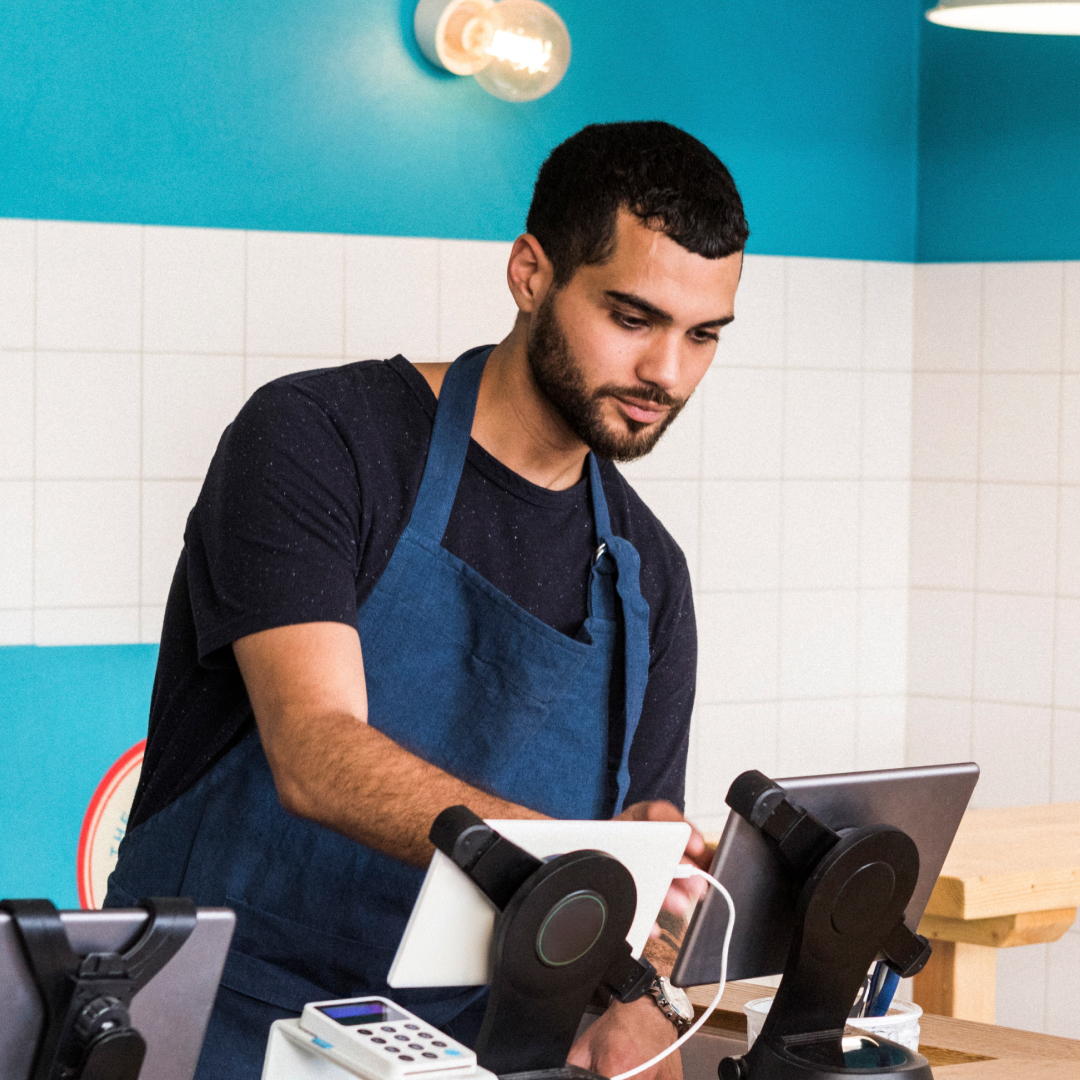Maximize your restaurant marketing ROI with these top tips from a marketing expert. Learn the 4 top ROI metrics to track to ensure your investments pay off.
Restaurant marketing can be mysterious, especially when it comes to knowing exactly what works. Marketing can get expensive fast, so it’s critical to know if the money you put in is paying off. You want to be confident that every dollar spent increases covers and drives up revenue.
With that in mind, this guide offers an overview of ROI basics, plus four all-important metrics you need to know when calculating ROI on your marketing and promotions, straight from a marketing expert who has been there, done it, seen it.
ROI in a nutshell
You can solve a lot of the mysteries around marketing by getting clear on your return on investment (ROI). It’s a metric that compares the profit generated by marketing to its cost and tells you how much money a specific marketing effort brings in.
Measuring your results is critical for success, and the good news is demystifying marketing ROI isn’t as hard as it may seem. Forget the over-complicated formulas—here’s how to get clear on your marketing performance so you can make investments that pay off.
Calculating ROI: the basics
What happens if you want a quick snapshot of your general ROI—an overview, if you will? Understanding the basics of how to calculate ROI will help you make decisions based on facts, not feelings.
First, you’ll need your reservation and revenue data handy. For the timeframe of a marketing campaign or promotion, look at your total revenue number and then subtract the cost of the campaign as well as food and operation costs. This will give you the net profit from the marketing initiative you’re trying to measure.
To determine ROI, you can calculate the following:
ROI = Net profit / (Marketing Cost + Food/Ops Cost)
These numbers empower you to make better, more cost-effective marketing choices to supercharge your success. No more guessing about the impact of any particular digital marketing channel. When you know your ROI, you’re in control.
4 metrics you need to know to calculate ROI on your marketing efforts
A brief overview of your restaurant marketing ROI can be helpful, but you’ll get the real details when you dig deeper. We spoke to Jeremy Threat, Vice President of Marketing at Kitchen Sync to see the four actions he takes to calculate ROI. Here’s what to look out for.
1.) Your current numbers
Before creating a promotion, ask yourself: Do you know where you’re trying to drive sales, exactly? Threat stresses the importance of knowing exactly what metric you want to affect—and no, it can’t just be a bigger bottom line.
“I like to tell people that not having detailed sales data is like getting into a car that doesn’t have a fuel gauge and doesn’t tell you how fast the car is going,” he says. Using data from a POS system can help create promotions that will impact specific line items.
“The idea is to say, ‘We know that on Tuesdays our wine sales are low, so how do we encourage this specific part of our sales to increase?'” After looking at that number you can create a goal and a targeted campaign that will be measurable using the same metric.
Understanding marketing ROI starts with hard numbers. The more precise your data, the better you can figure out what’s worked in the past and what hasn’t. Use this knowledge to squeeze more value out of every marketing dollar.
2.) A promotion expiration date
Once your promotion is in place, you can monitor the numbers and look for increases or decreases in sales to know if your marketing is working.
When Threat put the “$2, $3, $4” happy hour promotion in place, he knew it was a success very quickly—within a month or two. Threat recommends owners create an expiration date for a promotion to track its success. “I planned on three months as the threshold,” he says.
Having a cut-off date in place allowed him to measure the success of the marketing and know when to pull the plug without costing the restaurant too much money. Starting a promotion without an end date may sound appealing, and it may increase sales for a while, but if interest drops off it could equal a loss in profit.
When picking an expiration date, consider the way that the promotion is being disseminated. “Word-of-mouth marketing will take at least two months until you see an uptick,” Threat says. Printed fliers and social media will take less time.
3.) Cost of promotion
The cost of running a promotion is an expense that Threat says owners often overlook. Before you even get into the costs of printed materials and ads, think about the costs the restaurant will incur if the promotion is successful.
Before starting his “$2, $3, $4” promotion he looked at the food and labor cost in addition to bar sales. “I knew the food cost would go up since the price was so low,” he remembers. “I thought, if I sell this much and this is the cost or if we lose money, what’s the threshold until I pull the plug?”
Cost can also come in the form of labor. If your bar is suddenly twice as busy, that means you may need to put another bartender on that shift or your bartenders may need to clock in earlier. This is another area where having an expiration date becomes important.
And then there’s the marketing ads to consider on the likes of delivery platforms, such as DoorDash and Uber Eats. When you’re evaluating these, don’t forget to factor in the costs plus whatever extra delivery fees you incur. When it comes to marketing with discounts and promotions, subtract the percent discount or dollar value you’re offering as well as the cost of promoting the special from the revenue it brings in.
With OpenTable digital marketing, such as boost campaigns and bonus points, tracking metrics that matter is easy. You don’t have to wonder how many diners made reservations—you can count up the number of real seated covers, not clicks, likes, calls, or leads. And you only pay for diners who find you through your OpenTable campaign and actually come in and spend money with you. As a result, you always know the exact ROI for those ads, and the cost-per-acquisition is low compared to other options.
4.) An actual dollar amount
“You don’t take percentages to the bank,” Threat says. Even if you do see an increase in the number of something sold, you need to ultimately experience an increase in cash flow, too. “You have to see a ramp up in profit for something to be successful,” he continues.
That’s how you know that your promotion is giving you the best return. Obviously, if there’s no change in the bottom line because of costs or another factor, this negates the work of the promotion. At that point it’s time to go back to the data and take a look at what happened.
Remember, the goal of a promotion isn’t for someone to spend money at your restaurant once. The goal is for them to come in and enjoy their time so much that they want to come in again and again. “What you’re really trying to encourage is loyalty and repeat business,” Threat says. He says the worst thing that a restaurant can do is create a promotion just to bring in money without thinking about how it fits in with their brand.
“Like a fine-dining restaurant adding table tents to their dining room,” he says. “There’s no emotion and there’s no passion there.” Promotions can still speak to your brand and who you are as a restaurant. “Make sure you’re not going against your mission and core values.”
Summary: Knowing your ROI
Understanding your marketing ROI allows you to pull the right levers to get more diners in the door when you want to. Ultimately, the best marketing investments translate into increased reservations and revenue numbers you can clearly count.




